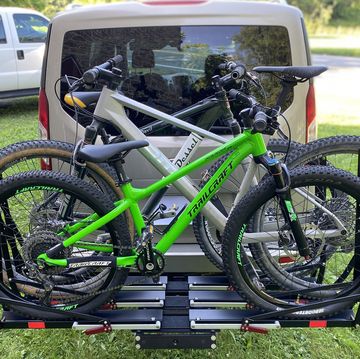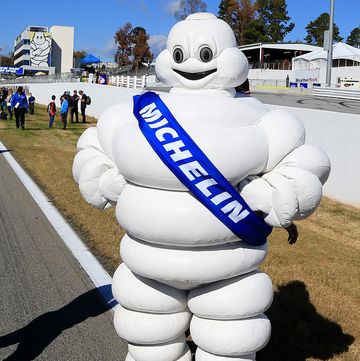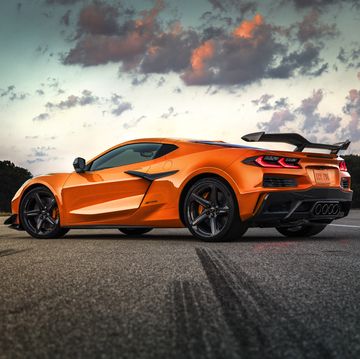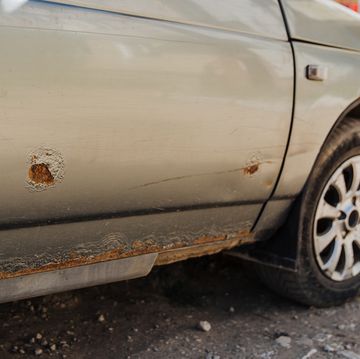The 17 Most Badass American Muscle Cars
These beautiful beasts have never gone out of style.
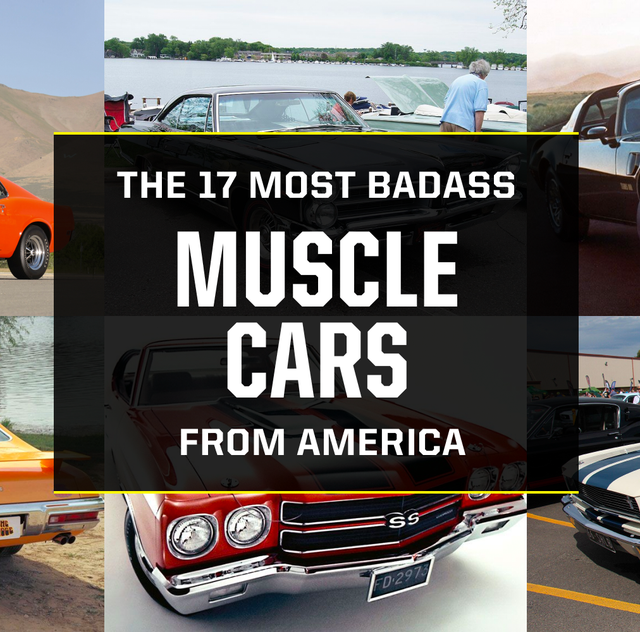
The 1960s and 1970s birthed the American muscle car scene, a beloved American pastime for those who enjoy learning about the different car specs and a hobby for collectors who can afford it. This era of power created some of the rarest and most iconic muscle cars packing giant torque-rich V8s the world has ever seen.
Today, some muscle cars can be found for relatively affordable prices—although they’ll likely need a lot of TLC (like this ’66 Barracuda for $5,500). Mint-condition models are another story; among the most expensive muscle cars ever sold are a 1967 L88 Corvette Convertible, 1971 Hemi Cuda Convertible 4-Speed, a 1967 Chevrolet Corvette L88 2-Door Coupe, and a 1962 Shelby Cobra CSX2000 which sold for $3.2 million, $3.5 million, $3.85 million, and a whopping $13.75 million, respectively.
Emissions and other regulations would tame muscle cars in the 1980s, but these aging beasts of the road still come with some surprising stories as well as some surprising horsepower—and, as always, total badassery.
Got a need for speed? Check out these auto stories from Popular Mechanics:
1966 Plymouth Barracuda
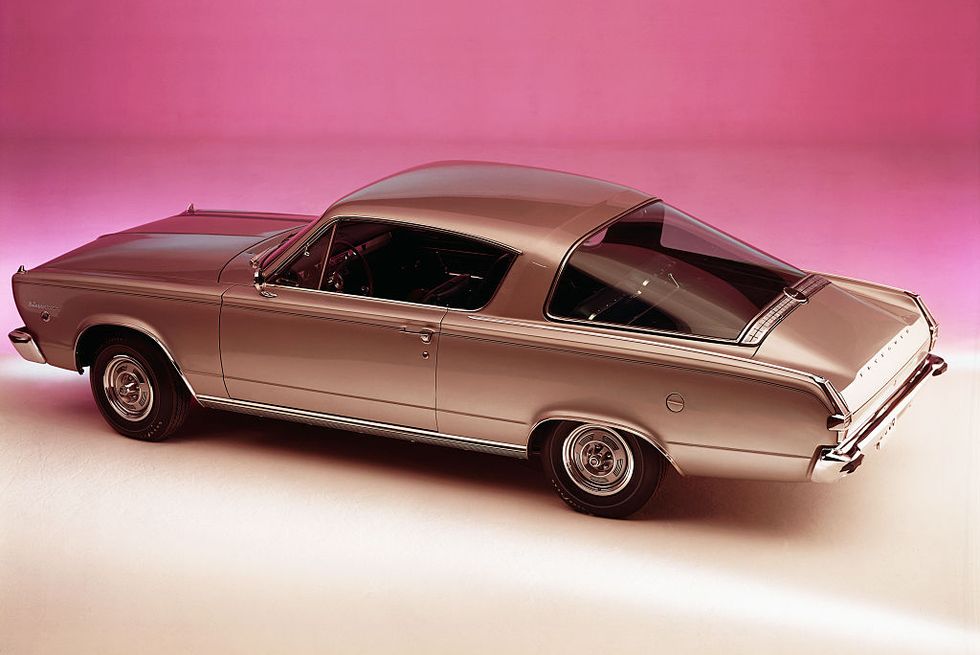
The Barracuda is a badass ride with the ability to go from zero to 60 in less than 10 seconds thanks to its 235-hp engine. Although there are quite a few first-generation muscle cars that are difficult to get a hold of now, the ’66 Barracuda isn’t one of them.
Hemmings reports that the first-gen Barracuda can be obtained “with relative ease.” Barracudas are distinctive in appearance thanks to their heavy, low profiles and the massive rear window that lends a futuristic look to this classic.
First-gen Barracudas were modified versions of the Plymouth Valiant—sometimes they were even referred to as Valiant Barracudas—and had weaker engines (for a muscle car at least) that ran on less than 150 hp.
Fast Fact: There’s a difference between a Barracuda and a ’Cuda, with the latter being more of a performance car. The ’Cuda first appeared in 1969 and featured a 330-hp engine.
1966 Shelby GT350
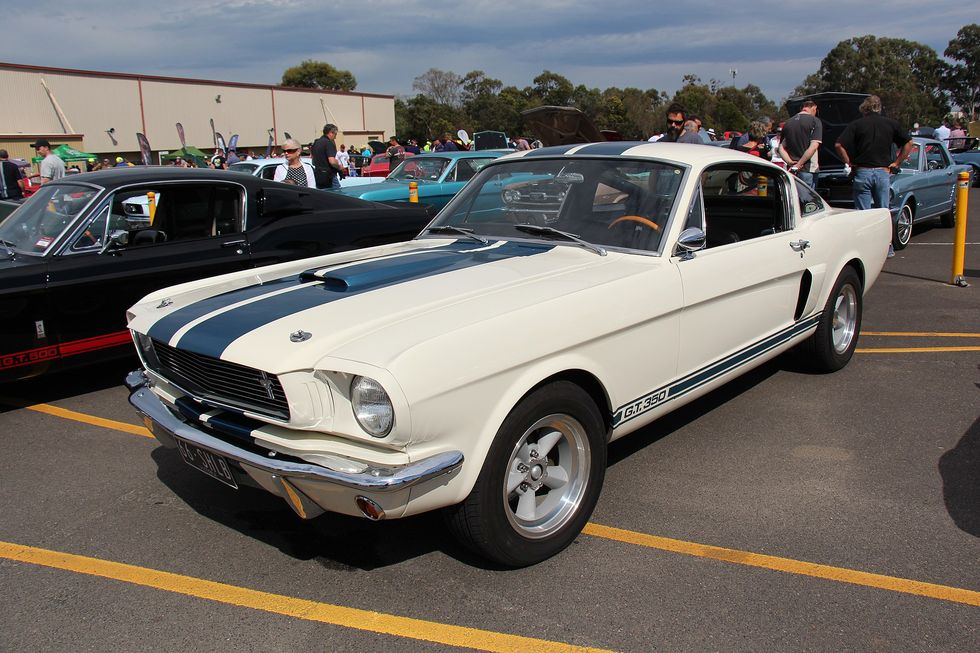
The legendary 1965 Mustang Shelby GT350 was a serious high- performance machine. In fact, some buyers that very first year felt these cars were a little too hardcore, and at the same time Shelby was on a rampage to cut costs. So for 1966, Shelby replaced, deleted, or made optional some of the car’s signature high-performance features like the adjustable Koni shocks, the fiberglass hood, free-flowing (and loud) side exhaust outlets, and that fully locking Detroit Locker rear differential.
Fast Fact: But if you checked the fine print, there was a Paxton supercharger option available for 1966. The $700 option was claimed to boost the 289 cubic inch V8’s 306-hp output by 46 percent. That’s probably a bit generous—at a theoretical 447 horsepower output—but was still an excellent power enhancer. That being said, the supercharger cost nearly a quarter of the car’s original price tag and just 12 customers were willing to pay.
1968 Ford Mustang Shelby GT500
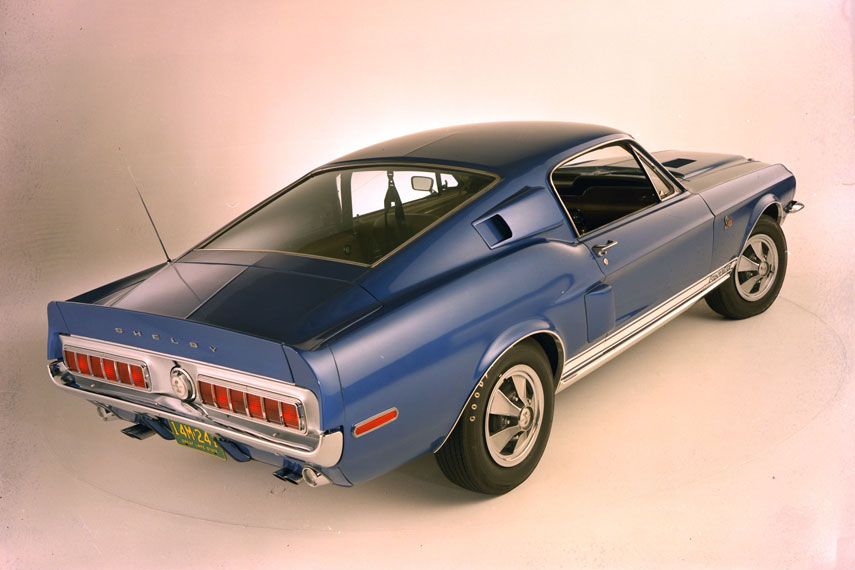
The first two years of Carroll Shelby’s Mustangs are the most desirable to many Mustang purists. Those 1965 and 1966 GT 350s were light, simply styled, and perfect for track work. But the later 1967 and 1968 cars offered more fun under the hood and were the machines of choice if you wanted to win drag races.
For the first time, ’67 to ’68 GT 500 Shelbys came with 355-hp, 428-cubic-inch big-block power under the hood. Car testers of the day saw quarter-mile time slips in the mid-to-low 14-second bracket—quick for the day. The Shelby Mustangs received more scoops and flashier styling than the older cars to match the newfound power and torque. And the even quicker KR (King of the Road) high-performance model was available in 1968 too.
Fast Fact: The 1967 Shelby Mustangs used Mercury Cougar tail lamps, but the 1968 models used lamps from the ’66 Ford Thunderbird.
Dodge Challenger SRT Hellcat Redeye
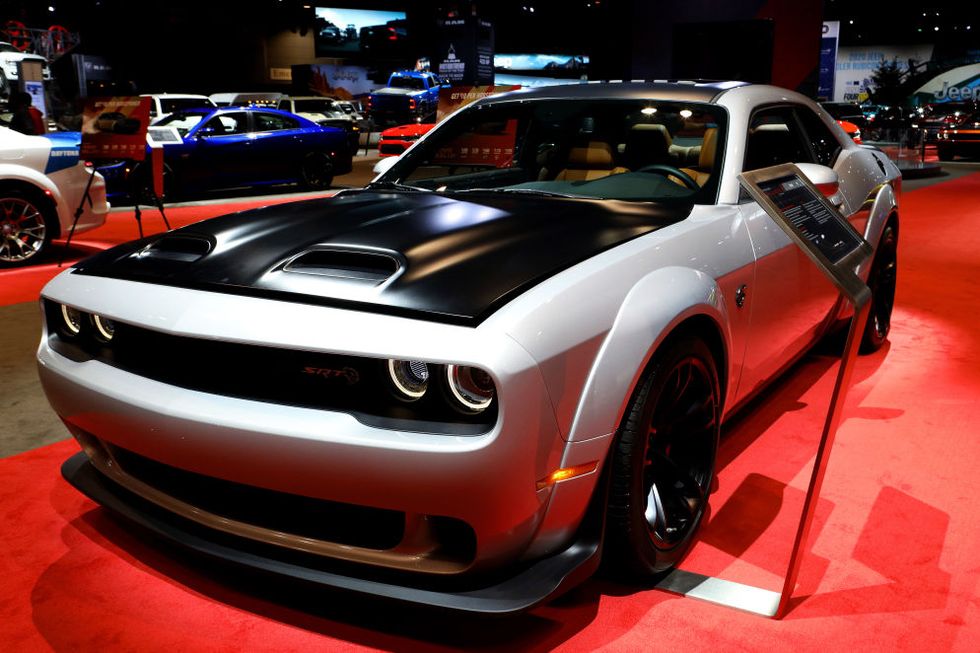
In its day, this beast was the most powerful Dodge Challenger ever made. The base 2020 model (pictured) would set you back about $70,000 to start. Dodge introduced the Challenger in 1969, with Hellcat being introduced much later in 2015.
The Redeye packs a powerful punch, able to breeze through the quarter mile in 10.8 seconds. And when we say powerful, we mean powerful; the Redeye weighs in at a whopping 4,514 pounds, but is still able to haul ass, thanks to a 797-hp V8 engine. The best part? You get the gorgeous look of a classic car with modern amenities and features we know and love.
Fast Fact: Challengers remain beloved among amateur and lifelong car enthusiasts alike. The most valuable models are the ones produced between 1970 and 1974, with some being sold upwards of six figures. Not too shabby for a company that started as a bicycle producer.
1969 ½ Dodge Super Bee A12

The Super Bee was essentially a high-performance version of the Dodge Coronet. In 1968, the Bee came standard with a 383-ci V8 or the legendary monster 426-ci Hemi. But halfway through the 1969 model year, Dodge made the 440-ci Six-Pack (three two-barrel carburetors) available. Known internally as option code A12, it wore a matte-black, lift-off fiberglass hood with a massive forward-facing scoop.
The A12 Super Bee produced 390 hp and a ridiculously potent 490 lb-ft of torque. And that happened to be same torque spec as the Hemi. So, you received nearly the same thrust in a more streetable package—and at a lower price, too.
Fast Fact: The Six-Pack-equipped A12 Super Bees went through final assembly by an outside vendor called Creative Industries in Detroit. The first 100 were built as 383 Coronets at the Chrysler Assembly Plant and then shipped to Creative for 440 Six-Pack engine installation along with some of the A12-specific features. And the first 100 of these big-block engines were equipped with Edelbrock aluminum intake manifolds. After the engines received regular production status, they were fitted at the plant with Chrysler-cast aluminum intakes.
1969-1971 Baldwin-Motion Phase III GT Corvette
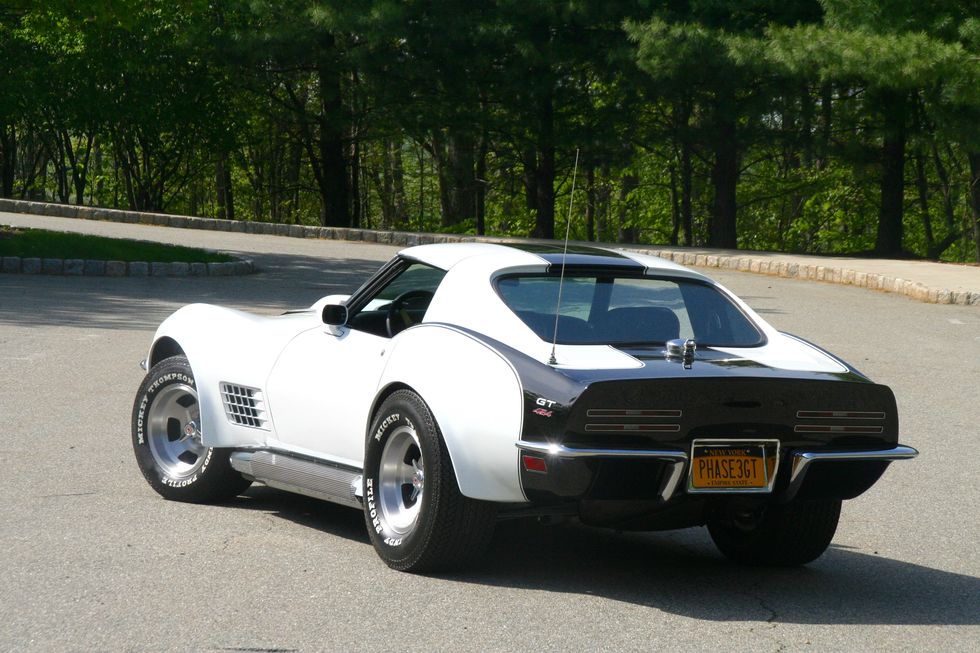
Baldwin-Motion was the first Corvette tuner, and the machines that company created were legendary. Baldwin Chevrolet, a dealer in Baldwin, New York, would deliver new Corvettes to Joel Rosen’s Motion Performance speed shop down the road for modifications. Motion would build these serial-production specialty Corvettes to order. It was Rosen’s dream in late 1968 to build a new, fast, and functional all-American GT sports car.
The sensuously styled Phase III GT was a stunner. It had a unique fastback rear window, a performance suspension, and as much as 600 dyno-tuned horsepower from either a 427-ci or 454-ci big-block V8s. Although one Motion ’Vette did receive a smaller LT1-spec 350-ci V8.
Fast Fact: When the father of the Corvette, chief engineer Zora Arkus-Duntov, caught wind of their operation, it could have been bad news for Motion. Instead, when Duntov first saw the GT at its launch at the 1969 New York International Auto Show, he gave the machine his blessing. According to Marty Schorr, who worked closely with Rosen on the cars, Duntov said, “I really like your Corvette, Joel. Unfortunately, we cannot do what you do.” Only 12 were built between 1969 and 1971.
1969 AMX/3
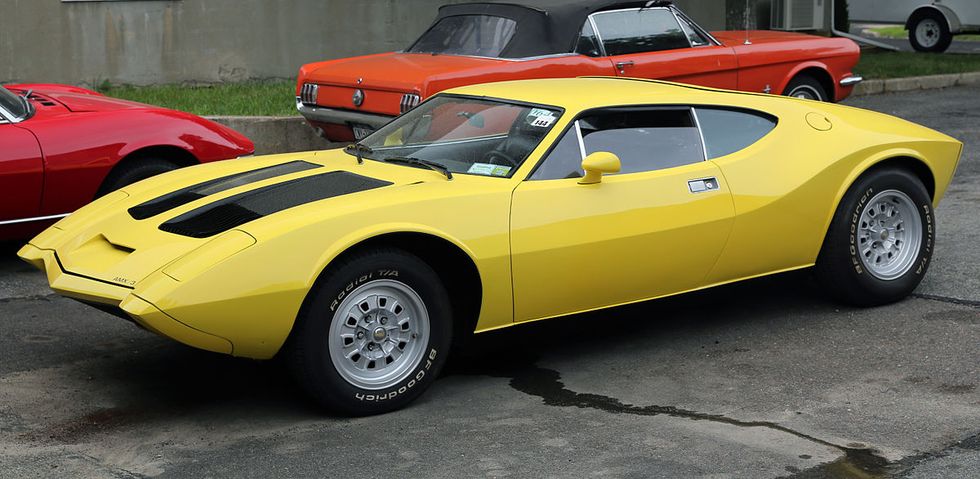
The AMX/3 was a stunningly cool, mid-engined exotic. Its development was an international collaborative effort between an AMC team led by Dick Teague (head of design), ItalDesign, Italian engineer Giotto Bizzarrini, and even some work was done by BMW. The 3,300-pound sports car was powered by an AMC 390-ci V8 that packed 340 hp and was backed by a four-speed manual. It could reportedly accelerate to 60 mph in just over 5 seconds and top 170 mph—solid numbers for the time.
But the machine never officially made it to AMC showrooms, in part because of cost. It would have required a sticker price reportedly close to $15,000 and just a few thousand dollars shy of Lamborghini’s Miura.
Fast Fact: Six prototypes were of this car were built (plus a rumored seventh parts car) and some of them ended up in private garages. These surviving AMX/3s look more like production cars than prototypes. And one of them sold at an auction in 2017 for almost $900,000.
1984 Chevy Corvette
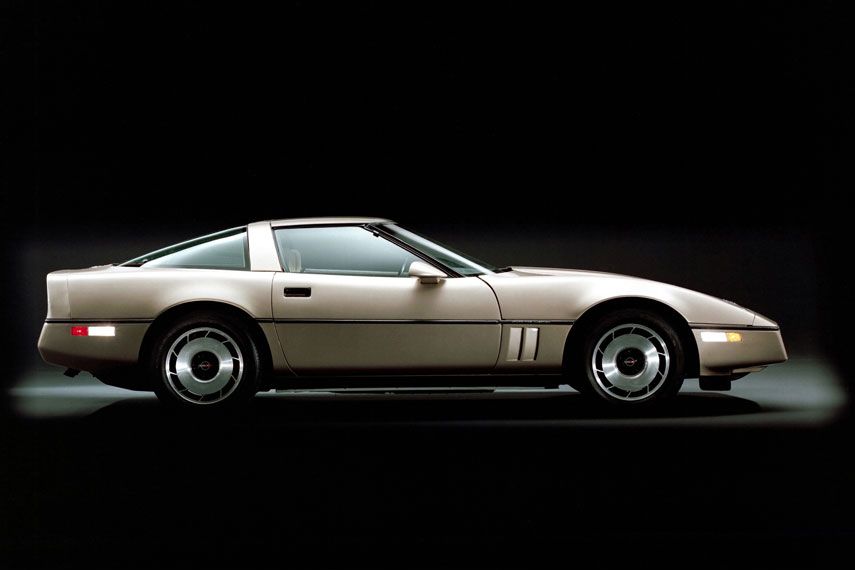
The third generation of America’s sports car, the Corvette, had an incredibly long run: 1968 to 1982. So when it came time for GM to launch the next-generation C4 Corvette, there was wild speculation about the car. Some predicted it would use a mid-engine chassis, like an Italian exotic. And others thought it might use a rotary engine, like Mazda’s.
In the end, the next Corvette wasn’t radical. It still had a small-block Chevy V8 up front driving the rear wheels. That first year, it cranked out a meager 205 hp. But after a switch to a new, tuned port fuel-injection system in later years, horsepower jumped—and so did performance. Five years later, Chevy debuted the first ultra-performance Corvette since the 1960s: the 375-hp ZR-1.
Fast Fact: There is no production 1983 Corvette. Although 1982 was the last year for the third-generation Corvette, Chevy decided to wait until the 1984 model year to launch the all-new car. Why? Some sources claim tighter emissions regulations necessitated more time for development. Others say quality glitches at the factory were the real reason. All we know is every 1983 Corvette prototype was destroyed, except one: a white car that now lives at the National Corvette Museum in Bowling Green, Kentucky.
1969 Dodge Charger Daytona
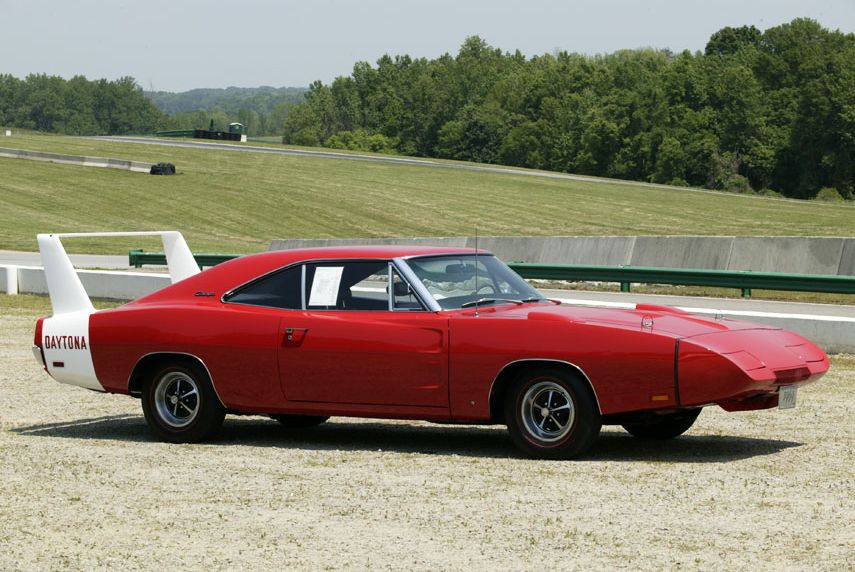
The 1969 Dodge Daytona and its sibling, the 1970 Plymouth Superbird, are arguably the most radical vehicles to emerge from the muscle car wars. But the Daytona, as the name might suggest, wasn’t designed for street racing. It was built to win Nascar races on the superspeedways—the longest and fastest tracks.
From the Archives: The Fastest County in America
To increase top speed, engineers took the Charger to the wind tunnel. The aerodynamic modifications to the big Dodge included a nearly 2-foot-tall rear wing, a flush rear window, and a longer, sloped nose cone. The results were impressive. The race version of the Daytona became the first car in Nascar history to break 200 mph. After numerous Dodge wins in 1969 and some by Plymouth in 1970, Nascar’s new rulebook banned these cars. The production cars, which came packing a 440 big-block or the legendary 426 Hemi, are sought-after collector cars today that bring more than $150,000 at auctions.
Fast Fact: The Daytona’s aerodynamic modifications over those of a standard Charger helped lower the coefficient of drag to 0.28—an excellent figure even by today’s standards. But did that huge rear wing really need to be so tall to maximize rear-end downforce? According to legend, no. The reason for the exaggerated height of the wing was so that the trunk lid on the production cars could pass underneath it and fully open.
1965 Pontiac Catalina 2+2

The high-performance GTO version of Pontiac’s Tempest is regarded in many circles as the original muscle car, and it added some serious heat to the automaker’s lineup for 1964. The following year, Pontiac decided to work that same magic on its bigger cars by dropping a 338-hp, 421-ci V8 into the all-new big body Catalina to create the 2+2 performance model. It was a terrible name, but a beastly machine, especially if you spent a few more bucks and upgraded to the 421 H.O. which made 376 hp. The 2+2 famously used wide, eight-lug hubs and included a beefier suspension, bucket seats, a Hurst shifter, and special badging.
Fast Fact: The high-performance cars Pontiac supplied to the automotive press during the 1960s were sent to Royal Pontiac in Royal Oak, Michigan, before landing in writers’ hands. Royal was a dealership, but it was also a tuning shop that offered Pontiac-approved speed parts for its clients. And it’s likely some of the best parts ended up on these Pontiacs because the Catalina 2+2 that was tested by Car and Driver at the time could not only hit 60 mph in 3.8 seconds and charge through the quarter-mile in 13.8 seconds, but it was quicker around a track than the Ferrari the magazine used in that comparison test. It’s safe to say no factory-equipped Catalina 2+2 could repeat that feat without some Royal speed parts.
1970 Oldsmobile 442
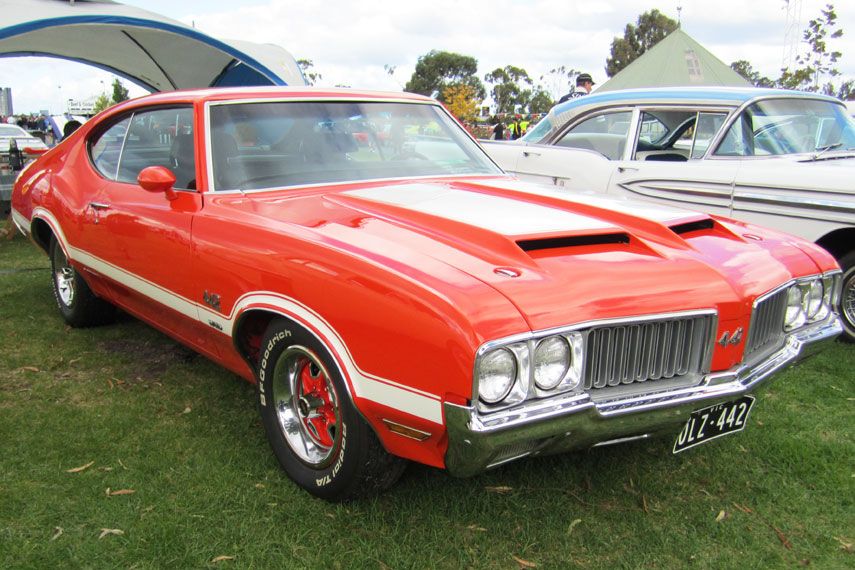
The 442 (which gets its name from its four-barrel carburetor, four-speed manual, and dual exhausts) was based on the Cutlass and became the hot muscle machine for the Oldsmobile division. It shared its platform with two other hot GM machines, the Chevy Chevelle SS and the Pontiac GTO. And like the GTO, the 442 was only a trim level at the beginning. But by 1970, you could get a huge 455-ci big-block V8. And when equipped with the even more potent W30 parts, the motor made 360 hp and a whopping 500 lb-ft of torque. It could hit 60 mph in less than 6 seconds, which was very quick for the time—especially for an Olds.
Fast Fact: Actor James Garner raced a beefed-up 1970 Olds 442 in the NORRA Mexico 1000 (a precursor to the Baja 1000), where it won second in class. The Goodyear Grabber, as it was known, was built by legendary Baja-race-vehicle guru Vic Hickey and sponsored by Goodyear tires. The vehicle was recently restored and put up for sale.
1978 Pontiac Firebird Trans Am
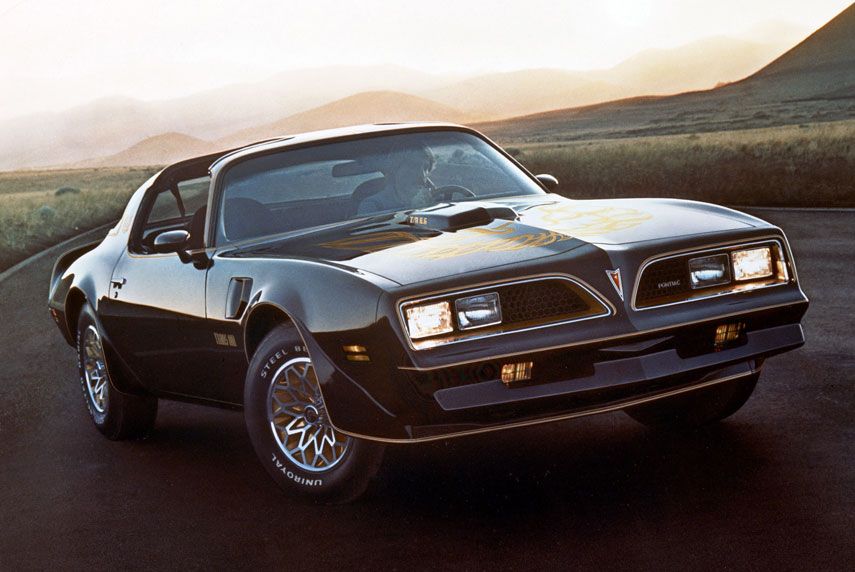
By the late 1970s, muscle car performance was a mere shadow of what it had been years earlier. The latest emissions controls, combined with high gas prices and stratospheric insurance costs, caused most automakers to severely dial back horsepower.
But not Pontiac. The Trans Am had been riding a new wave of popularity since its starring role in the movie Smokey and the Bandit. For the 1978 model year, Pontiac added to the excitement by actually increasing the horsepower of its top-level Trans Am from 200 to 220. The brand also developed a special handling package called the WS6 that added a sport-tuned suspension, wider 8-inch wheels, new tires, and quicker steering. The result was a Pontiac Trans Am that was actually quicker and handled better around a track than the Chevy Corvette.
Check it out: The 40 Best Movie Cars of All Time
Fast Fact: The Pontiac’s T-top roof, which first became an option in 1976, was as close as a buyer could get to a convertible Trans Am. These lift-out roof sections were initially made by Hurst and were known as the Hurst Hatch. The problem was, they leaked. This led Pontiac to develop its own T-tops within GM’s Fisher body division and launch the option midway through the 1978 model year. So some ’78 Firebirds have Hurst T-tops and others have the Fisher units. You can spot the difference because the Fisher glass roof panels are larger than the Hurst Hatch ones.
1969 Ford Mustang Boss 429
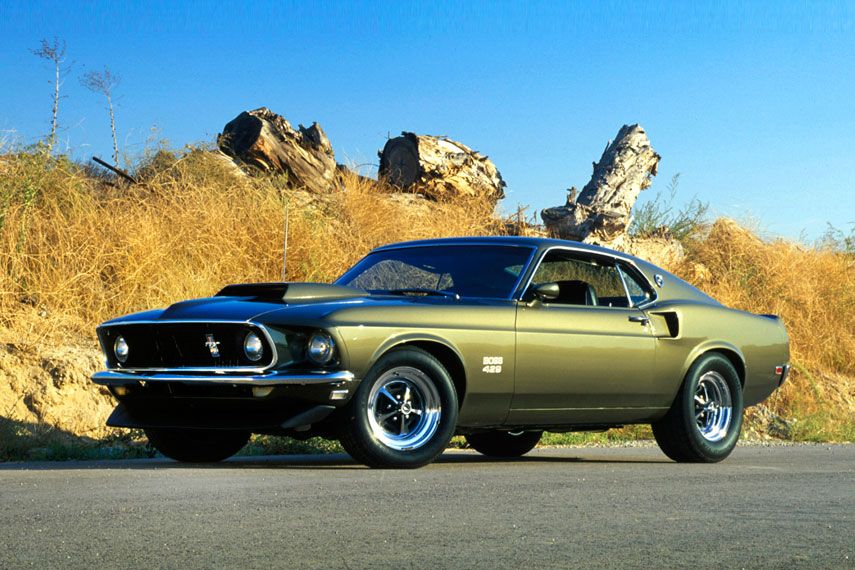
In the late 1960s and early 1970s, Nascar was in its golden age. Automakers took the business of stock-car racing seriously and would dream up engines and bodywork for racing that were often too wild for the street. All the automakers needed to do was sell 500 of these radical cars and they could run them in Nascar.
The Boss 429 Mustang was such a beast. Although the Mustang didn’t compete in Nascar, the 375-hp, 429-ci V8 under its hood was designed specifically for racing and built to rev to 6000 rpm. The problem was, this motor did not perform well on the street. It was slower than the other big-block Mustangs at the time.
The Nascar-bound V8 was monstrously large and did not fit in a stock Mustang’s engine bay. So Ford contracted Kar Kraft in Brighton, Michigan, to handle the job. The company relocated the shock towers, widened the track of the front end using unique componentry, relocated the battery to the trunk, and fitted a smaller brake booster—all to make room for this beastly power plant to fit in the Mustang. Today, the rarity and mystique behind the Boss 429 has pushed values at auction well beyond $200,000.
Fast Fact: Therewere actually three different 429 engines installed in the Boss 429 between ’69 and ’70. The hardcore “S-Code” was installed in early cars and filled with race-duty parts. But the S-Code had warranty problems, reportedly because of an incorrect assembly process. So the “T-Code” with lighter-duty parts was used in some cars. The later “A-Code” version of the 429, equipped with smog equipment and a new valvetrain, appeared toward the end of production.
1970 Chevy Chevelle LS6
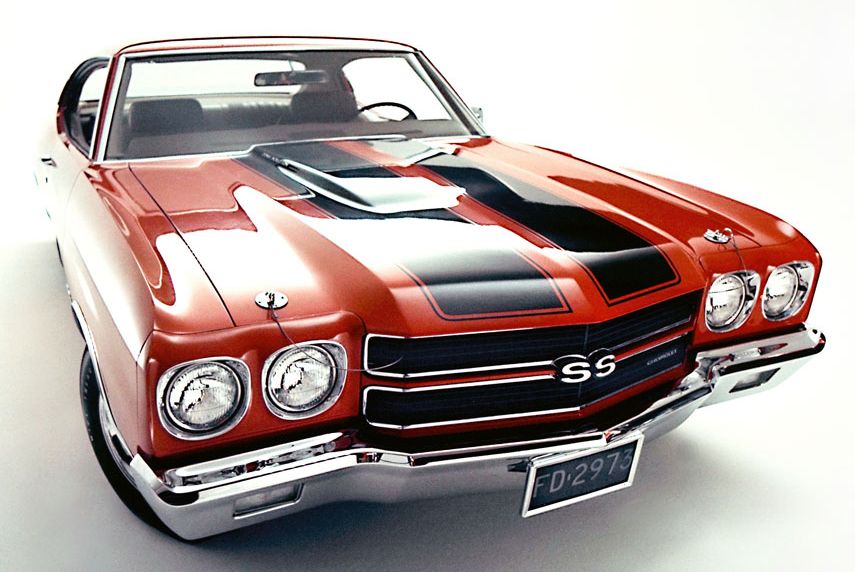
When GM relaxed its longstanding rule forbidding engines larger than 400 ci to be installed in midsize cars, it set off a muscle frenzy across the company’s divisions. Oldsmobile put the huge 455-ci into its 442, and Chevy installed a unique 454-ci V8, the LS6, into its Chevelle SS.
A conservative estimate of the LS6’s power puts it at 450 hp and 500 lb-ft of torque. But thanks to its high 11.25:1 compression ratio and giant Holley 780 CFM carb, the LS6’s real output in the Chevelle SS was closer to 500 hp, many experts claim. Our pals at Car and Driver tested one in 1970 and found it hit 60 mph in just 5.4 seconds, running through the quarter-mile in 13.8 seconds. And that was with the skinny low-grip tires of the day; that same car with modern rubber would be much quicker. The LS6 carries the highest factory horsepower rating of all muscle cars.
Fast Fact: The Chevrolet Corvette has always been Chevy’s top performance car. And up until the LS6, GM wouldn’t allow any other Chevy to carry a horsepower rating higher than that of the Corvette. But somehow that stance was relaxed for 1970; the highest horsepower engine you could get in a 1970 Corvette was a 390-hp LS5 454. An LS7 was planned with 465 hp, but it was never officially sold. So why no LS6? An LS6 Corvette was offered for 1971, but its potency slipped (at least officially) to 425 hp.
1969 Pontiac GTO Judge
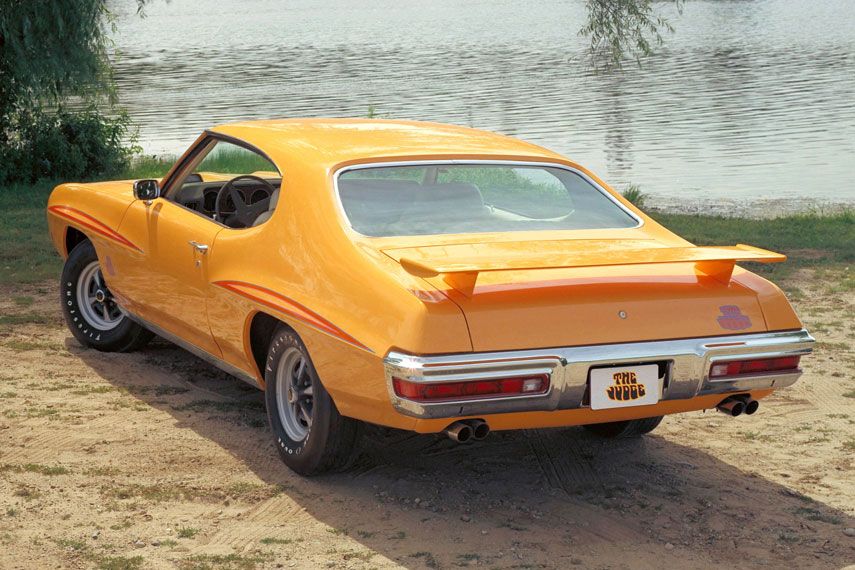
Pontiac owned the muscle scene in the early 1960s. In fact, the 1964 Pontiac GTO is widely regarded as the very first of the breed. But by 1968, that car had plenty of competition. The thought within Pontiac was to make a cheaper version of the GTO with a smaller 350-ci engine called the ET (for “elapsed time”), a drag-racing term.
Pontiac boss John DeLorean didn’t like that idea. To him, no GTO could have an engine that small. Instead, the team built a car one step up from the regular GTO. DeLorean himself named the car after a popular skit on the TV show Rowan and Martin’s Laugh-In. The Judge featured the 360-hp Ram Air III engine standard, but buyers could also opt for the more hardcore 370-hp Ram Air IV. The rarest of all were the GTO Judge Ram Air IV convertibles—only five were built in 1969.
Fast Fact: The original TV commercial for the Judge featured the rock band Paul Revere and the Raiders singing about the GTO out on a dry lakebed. According to the book Pontiac Pizazz, by Jim Wangers and Art Fitzpatrick, the lead singer, Mark Lindsay, was a car guy and loved the Judge, so he wrote a song about it. Wangers claims this commercial is considered one of the earliest rock-music videos.
1969 COPO Camaro
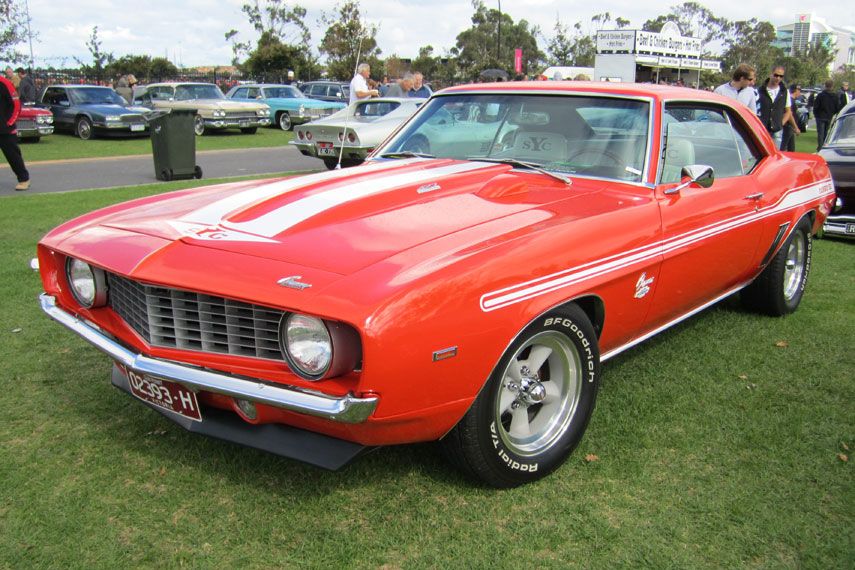
Chevrolet’s Central Office Production Order (COPO) system was designed for fleet sales; it was intended to spec out heavy-duty suspensions for cop cars and stain-proof interiors for taxicabs. But enterprising dealers with the right connections, such as Yenko Chevrolet in Pennsylvania, figured out that Camaros could be ordered this way, too. And given the right order codes, the dealer could spec out a fire-breathing monster of a Camaro that Chevy didn’t really want you to own.
The production order 9561 specified a 427 big-block V8 rated at 425 hp—just like a Corvette. But the even rarer COPO 9560 called for an all-aluminum ZL-1 427 V-8. Though this engine was rated with just 5 more hp, it was widely known that this race-spec engine delivered more like 550 hp. Only 69 ZL-1 Camaros were built, and these cars command prices in the $400,000 range at an auction.
Fast Fact: The aluminum ZL-1 427 V-8 in the 9560 COPO Camaro is essentially a race engine. Chevy originally developed this 427 motor for the Chaparral racing team to use in the Can Am series. There are no external emblems on a ZL-1 Camaro that let you know what’s under the hood—only plain-vanilla Camaro badges.
1987 Buick GNX
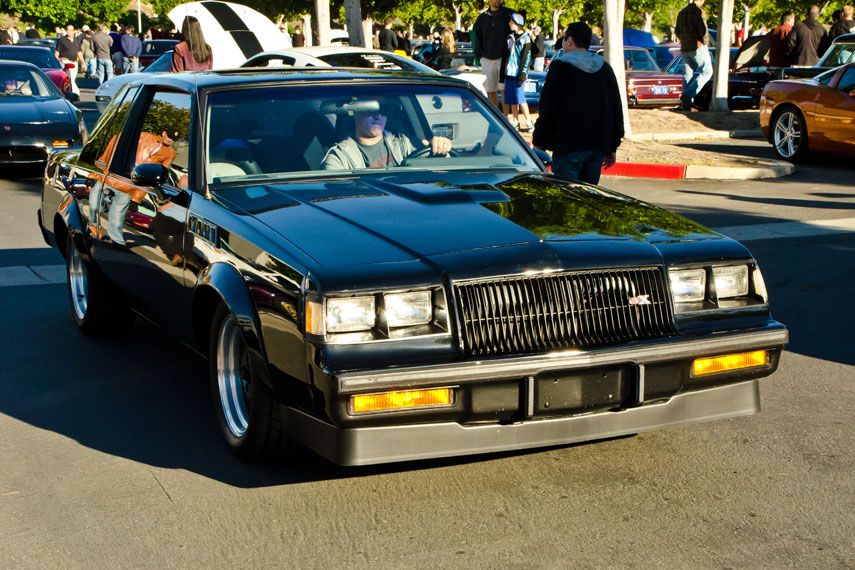
Long after the big-block V8-powered muscle cars of the 1960s and 1970s went, Buick brought back some of that magic in the 1980s. The Buick GNX, based on the Grand National (which is itself a hot-rod version of the Regal coupe), was equipped with a potent, turbocharged V6. The GNX package brought the Grand National’s horsepower from 245 up to 276. Car and Driver tested one in 1987 and recorded a 0-to-60-mph time of just 4.6 seconds, making it one of the quickest cars on the market. Buick made only 547 of these black beasts. Many were squirreled away into storage as investments.
Fast Fact: Buick had quite a few of these engines left over when it stopped production of the GNX—so Pontiac picked up the turbo V6s and put them in the 1989 20th Anniversary Trans Am. It was conservatively rated at just 250 hp, but true GM enthusiasts knew the potential that lay under the hood of that Trans Am.

Ben is a lifelong enthusiast of anything with wheels. He has been contributing to Popular Mechanics for nearly 20 years and lives in Venice with an eclectic collection of vintage pickup trucks, muscle cars, and motorcycles scattered in various garages around SoCal.
Watch Next


How to Replace Your Car’s Brakes
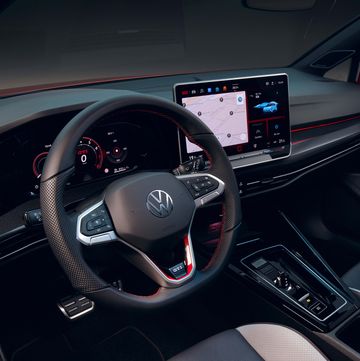
Volkswagen ID.4, Updated Golf Will Feature ChatGPT
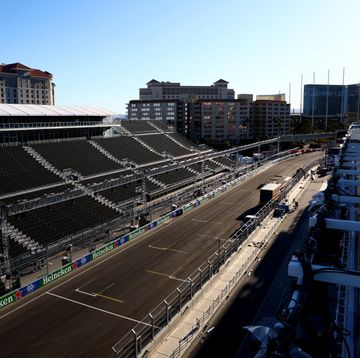
How They Built the Las Vegas Formula 1 Circuit
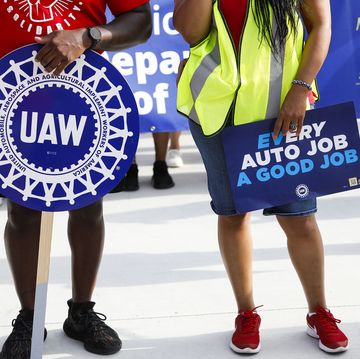
What a UAW Strike Could Mean for Car Buyers

